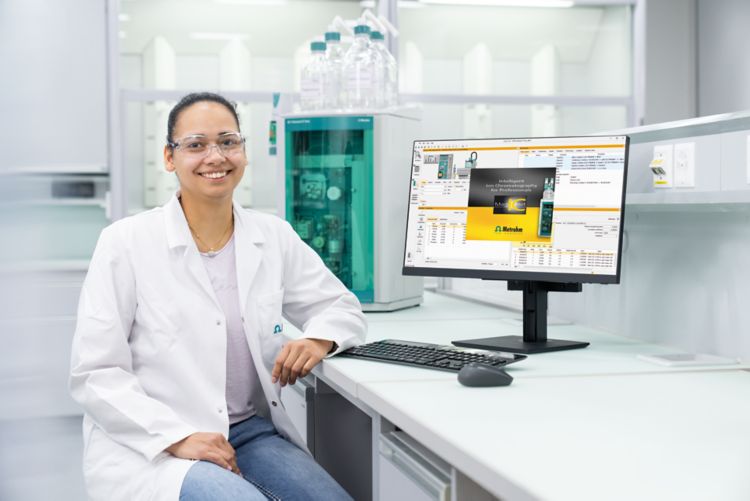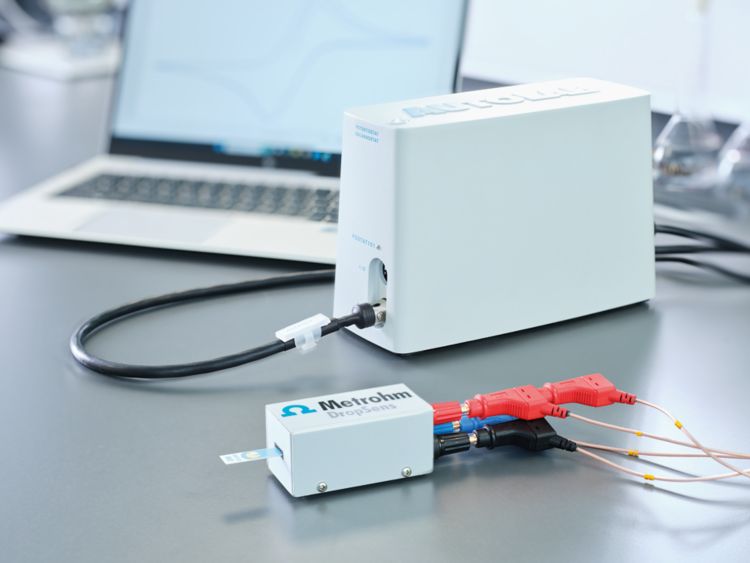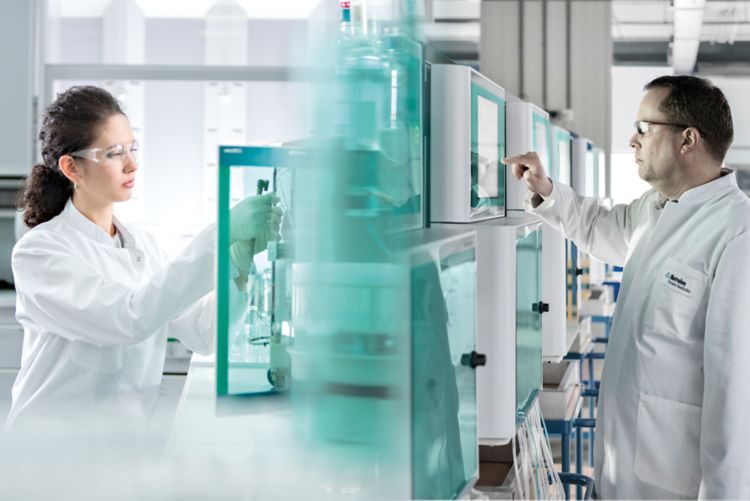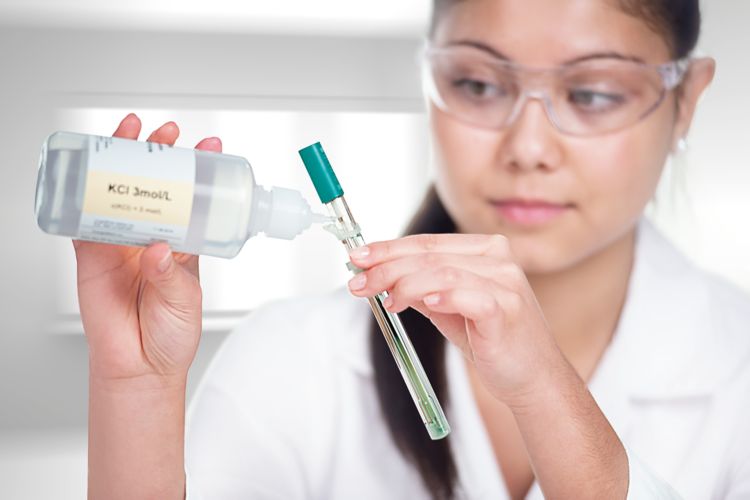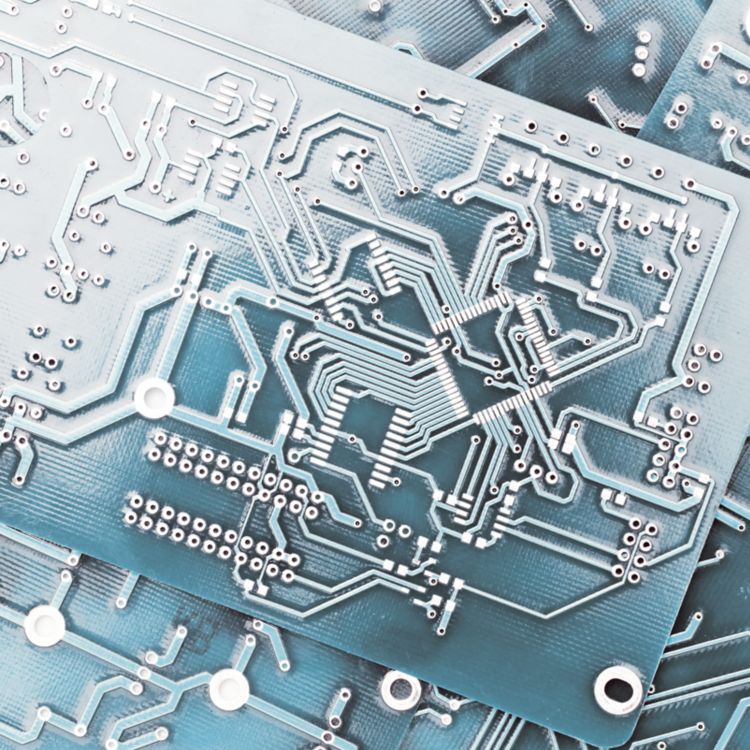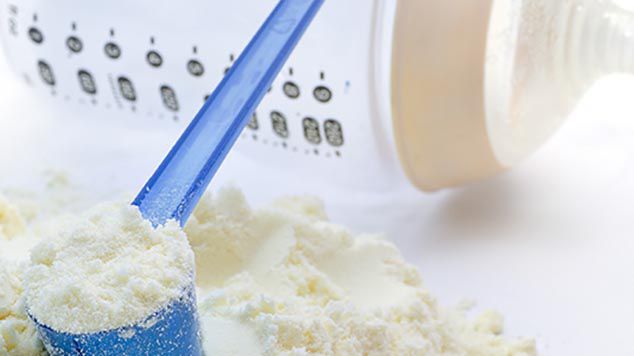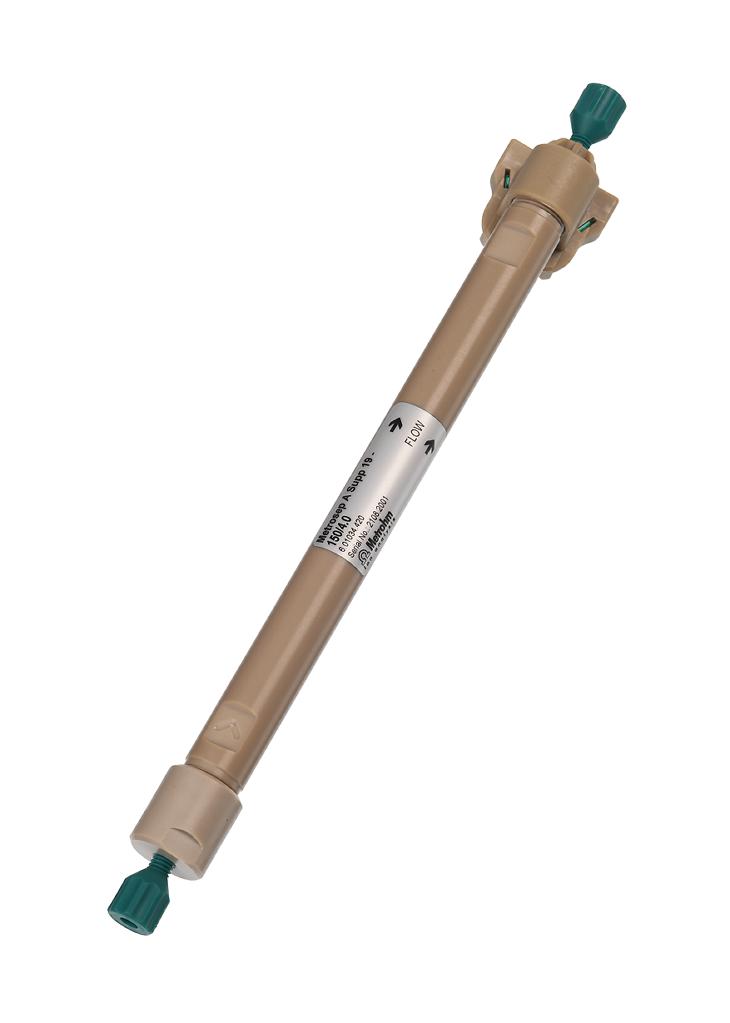Search
Market-leading solutions
Product families (70)Product configurations for any application
Product models (712)Tried-and-tested applications
Applications (2251)Trainings & webinars by experts
Events (7)Electrodes
Electrodes (508)Columns
Columns (155)Accessories
Accessories (2246)Software
Software (266)Manuals & brochures
Documents (2601)Other content
Items (108)On-demand webinars
Webinars (70)Unmatched support & service
Support & service (114)News
News (98)Inspiring industry insights
Insights (181)940 Professional IC Vario
One instrument – ultimate flexibility: Ion chromatograph with virtually no limitations to individual system configuration and customization.
OMNIS titrators
All-in-one potentiometric autotitrator platform: faster results, safer handling of chemicals, and maximum modularity for easier adaptability to your requirements.
OMNIS KF titrators
Fully integrated solution for water content determination with volumetric and coulometric Karl Fischer titration.
OMNIS NIR Analyzer
Good vibes in your lab: State-of-the-art near-infrared spectrometer for easier, faster, and more efficient quality control and routine screening.
2060 Platform
The robust and reliable modular analyzer platform for ultimate flexibility in customized process monitoring.
MIRA XTR
The premier handheld Raman system for safe in-field identification of unknown materials: compact, flexible, smart, and rugged.
VIONIC powered by INTELLO
The future of electrochemistry is pure. VIONIC: one instrument, pure discovery.
Professional CVS
Flexible benchtop analyzers for Cyclic Voltammetric Stripping.
949 pH Meter
Compact, entry-level benchtop pH meter for simple and reliable pH, mV, and ORP measurements.
Titrando
From stand-alone titrator to a fully automated solution in an overarching network: a potentiometric titrator that can be tailored to your specific requirements.
2.1001.0010
OMNIS Titrator without stirrer, without function licenseInnovative, modular potentiometric OMNIS Titrator. Thanks to 3S Liquid Adapter technology, handling chemicals is safer than ever before. The titrator can be freely configured with measuring modules and cylinder units and can have a stirrer added as needed. Thanks to various software function licenses, various measuring modes and functionalities are possible. Actuation via PC or local network; Connection option for up to four additional titration or dosing modules for additional applications or auxiliary solutions; Can be supplemented with magnetic stirrer and/or rod stirrer; Various cylinder sizes available: 5, 10, 20 or 50 mL; Liquid Adapter with 3S technology: Safe handling of chemicals and automatic transfer of the reagent dataMeasuring modes and software options:; Endpoint titration: "Basic" function license; Endpoint and equivalence point titration (monotonic/dynamic): "Advanced" function license; Endpoint and equivalence point titration (monotonic/dynamic) with parallel titration: "Professional" function license; Optional licenses for additional measuring, titration, and operating modes (e.g. volumetric Karl Fischer titration, conductometric or thermometric titration, coulometry, determination of the bromine index) ;
2.1008.0010
Eco TitratorThe compact Eco Titrator with integrated magnetic stirrer and touch-sensitive User Interface is ideal for routine analysis. It provides GLP-compliant results with minimum space requirements at all times (approx. DIN A4).Universally compatible with almost all potentiometric titrations, such as, for example, forFood products: Acid content, chloride, Vitamin C, iodine and peroxide number in fats; Water analysis: Carbonate and Ca/Mg hardness, chloride, sulfate, permanganate index; Petrochemistry: Acid/base number, sulfide & mercaptans, chloride, bromine number; Electroplating: Total acid, metal content, chloride; Surfactant analysis: Anionic, cationic and non-ionic surfactants; Photometry with the Optrode: p and m value, metals, water hardness;
2.1012.1010
OMNIS Sample Robot L Pick&PlaceOMNIS Sample Robot L with a "Peristaltic" (4-channel) pump module and a Pick&Place module in addition to extensive accessories for the direct transition to fully automatic titration. The system provides space in seven sample racks for 112 sample beakers of 120 mL each.The system can be extended upon request to include up to four peristaltic pumps and three additional Pick&Place modules, thus quadrupling the throughput while at the same time also guaranteeing long and interruption-free operation.
2.143.0200
TX-900MH impact printerCompact impact printer with USB and RS232 interface for 900 Touch Control (+); 915 KF Ti-Touch (+); 916 Ti-Touch (+); 917 Coulometer (+); 91X Meter (+)Eco Dosimat/Titrator (+); 877/848 Titrino plus (additional 6.2151.100 required); 865/876 Dosimat plus (additional 6.2151.100 required); 862 Compact Titrosampler (additional 6.2151.100 required); 870 KF Titrino plus (additional 6.2151.100 required); 899 Coulometer (additional 6.2151.100 required); (+) Cable included in scope of delivery
2.780.0010
780 pH MeterIn addition to pH, voltage and temperature measurement, the 780 pH Meter also offers an automatic stirrer control, a multi-point calibration with up to nine buffers, a method memory and various monitoring functions. The automatic pH electrode test in conformance with GLP permits objective assessment of the electrode. The large backlit multi-line display provides an overview and makes the individual settings easy. The bi-directional RS-232 interface enables data transfer to a printer or PC.
2.781.0010
781 pH/Ion MeterIn addition to pH, ion, voltage and temperature measurement, the combined 781 pH/Ion Meter also offers an automatic stirrer control, a multi-point calibration with up to nine buffers (pH mode), a method memory and various monitoring functions. The automatic pH electrode test in conformance with GLP permits objective assessment of the electrode. The large backlit multi-line display provides an overview and makes the individual settings easy. The bi-directional RS-232 interface enables data transfer to a printer or PC.Three different modes are available for ion measurement: direct measurement, standard or sample addition. In the case of fully automated standard addition with an optional Dosimat, only the concentration of the standard and the desired quantity of addition steps need to be entered, the pH/ion meter takes care of the rest. Up to 19 standards can be used for the calibration for direct measurement.
2.856.0010
856 Conductivity ModuleConductivity measuring module as supplement to an existing Titrando system or "stand-alone" in combination with a 900 Touch Control. With the 856 Conductivity Module, not only conductivity and temperature can be determined, but also TDS and salinity. It supports state-of-the-art conductivity measuring cells, i.e. 5-ring measuring cells. The Conductivity Module is equipped with two USB interfaces for connecting printers, barcode readers, or sample changers and four MSB interfaces for stirrers or Dosinos.For use with OMNIS Software, tiamo software, or Touch Control unit. Compliance with GMP/GLP and FDA regulations such as 21 CFR Part 11, if required.
2.856.0110
856 Conductivity Module with Touch Control, including 5-ring conductivity measuring cellHigh-end conductometer, based on the 856 Conductivity Module, including 900 Touch Control, 5-ring conductivity measuring cell and calibration standards. With the 856 Conductivity Module, not only conductivity and temperature can be determined, but also TDS and salinity. It supports state-of-the-art conductivity measuring cells, i.e. 5-ring measuring cells.The Conductivity Module has two USB interfaces for connecting printers, barcode readers or sample changers and four MSB interfaces for stirrers or Dosinos. In combination with the 900 Touch Control, the 856 Conductivity Module is in compliance with GLP and FDA 21 CFR part 11 requirements.
2.867.0010
867 pH ModuleModule for pH/ion measurement as supplement to a Titrando or "stand-alone" in combination with a 900 Touch Control.In addition to measurements of pH, temperature, mV, Ipol, Upol and concentration, the pH Module can perform standard additions (manual, dos, autodos) and Liquid Handling (add, prep, empty). It enables the use of both conventional and intelligent sensors for measuring. Also integrated in the software is an automatic GLP-compliant pH electrode test.The pH Module has two USB interfaces for connecting printers, barcode readers or sample changers and four MSB interfaces for stirrers or Dosinos (for the addition of auxiliary solutions or for standard addition).For use with OMNIS Software, tiamo software, or Touch Control unit. Compliance with GMP/GLP and FDA regulations such as 21 CFR Part 11, if required.
2.867.0110
867 pH Module with Touch ControlHigh-end pH/ion meter based on the 867 pH Module, including 900 Touch Control, 854 iConnect and intelligent "iUnitrode" pH glass electrode.In addition to measurements of pH, temperature, mV, Ipol, Upol and concentration, the pH Module can perform standard additions (manual, dos, autodos) and Liquid Handling (add, prep, empty). It enables the use of both conventional and intelligent sensors for measuring. Also integrated in the software is an automatic GLP-compliant pH electrode test.The pH Module has two USB interfaces for connecting printers, barcode readers or sample changers and four MSB interfaces for stirrers or Dosinos (for the addition of auxiliary solutions or for standard addition).In combination with the Touch Control, it is in compliance with GLP and FDA 21 CFR part 11 requirements.
- 8.000.60098.000.6009Determination of lanthanides by ion chromatography using non-suppressed conductivity and UV/VIS detection
The simultaneous ion chromatographic determination of trace-levels of lanthanides (or lanthanoides) was achieved by using either direct non-suppressed conductivity detection or UV/VIS detection after post-column reaction (PCR) with arsenazo III at 655 nm. Conductivity detection under isocratic conditions resulted in an overall analysis time of approx. 70 minutes. In contrast, the determination of the lanthanides via gradient elution and subsequent spectrophotometric detection of the arsenazo III-lanthanide(III) complexes was performed within 22 minutes. Besides the outstanding analysis time, UV/VIS detection excelled by its enhanced selectivity and sensitivity and did not suffer from interferences by ubiquitous non-lanthanide impurities such as iron(III) or other transition metals. For both conductivity and spectrophotometric detection, the inclusion of sample preconcentration steps lowered the limit of detection (LOD) to the sub-ppb range.
- 8.000.60108.000.6010Inline sample preparation – An effective tool for ion analysis in pharmaceutical products
By means of azide analysis in Irbesartan a simple, fast, precise and accurate ion chromatographic method for the determination of traces of inorganic contaminants in pharmaceuticals is described. Traces of toxic azides in pharmaceutical products can accurately be determined in the sub-ppb range after Metrohm Inline Matrix Elimination using isocratic ion chromatography (IC) with suppressed conductivity detection. While the azide anions are retained on the preconcentration column, the interfering pharmaceutical matrix is washed away by a transfer solution, ideally consisting of 70% methanol and 30% ultrapure water. The analytical setup provides a well-resolved azide peak and thus alleviates the common drawback of excipient interferences, especially from the nitrate anion. Calibration with azide standards is linear over the range of 5…80 ppb, providing a coefficient of determination of 0.9995. The limit of detection (LOD) and the limit of quantification (LOQ) of azide in Irbesartan are 5 and 30 µg/L respectively; the relative standard deviations (RSD) for the peak area, peak height and retention time being smaller than 3.9%. Robustness testing involved variation of column oven temperature and composition of the transfer solution and, in terms of peak area, provided RSDs smaller than 2.8% and 3.1% respectively.
- 8.000.60118.000.6011Ion chromatographic determination of anions, cations and organic acids in biofuels
Quality and process control of biofuels require straightforward, fast and accurate analysis methods. Ion chromatography (IC) is at the leading edge of this effort. Traces of anions in a gasoline/ethanol blend can accurately be determined in the sub-ppb range after Metrohm Inline Matrix Elimination using anion chromatography with conductivity detection after sequential suppression. While the analyte anions are retained on the preconcentration column, the interfering organic gasoline/bioethanol matrix is washed away.Detrimental alkali metals and water-extractable alkaline earth metals in biodiesel are determined in the sub-ppm range using cation chromatography with direct conductivity detection applying automated extraction with nitric acid and subsequent Metrohm Inline Dialysis. Unlike high-molecular substances, ions in the high-ionic strength matrix diffuse through a membrane into the low-ionic water acceptor solution. In biogas reactor samples, low-molecular-weight organic acids stem from the biodegradation of organic matter. Their profile allows important conclusions concerning conversion in the anaerobic digestion reaction. Volatile fatty acids and lactate can be accurately determined by using ion-exclusion chromatography with suppressed conductivity detection after inline dialysis or filtration.
- 8.000.60128.000.6012Automated logical dilution for ion chromatographic determinations
The combination of 850 Professional IC, 858 Professional Sample Processor, Dosino and MagIC NetTM software offers a variety of sophisticated ion chromatographic sample preparation techniques. One of these is the automated inline dilution of samples.After the first sample injection, MagIC NetTM verifies if the area of the sample peak lies within the calibration range. If the measured peak area is outside these limits, the software calculates the appropriate dilution factor, dilutes and automatically re-injects the sample. For all investigated ions (Li+, Na+, K+, Ca2+, Mg2+, F-, Cl- , NO2-, Br-, NO3-, SO42- ), automated logical dilution yielded coefficients of determination (R2) better than 0.9999. Direct-injection recoveries for cations and anions were within 98.6…99.5% and 93.4…100.4% respectively. In contrast, after logical dilution, recoveries for cations and anions were within 100.1…102.9% and 98.2…102.6% respectively. The relative standard deviations for all determinations involving diluted sample solutions were smaller than 0.91%.
- 8.000.60138.000.6013Analysis of produced water contaminants by ion chromatography
The analytical challenge treated by the present work consists in detecting sub-ppm quantities of bromide, sulfate, aliphatic monocarboxylic acids and several alkaline earth metals in the presence of very high concentrations of sodium and chloride. Bromide, sulfate, acetate and butyrate can be reliably determined by suppressed conductivity detection. Due to matrix effects, propionate can only be detected qualitatively. This drawback can be overcome by coupling the ion chromatograph (IC) to a mass spectrometric (MS) detector. This results in reduced matrix interferences and significantly enhanced sensitivities. The cations magnesium, barium and strontium are determined by non-suppressed conductivity detection.
- 8.000.60148.000.6014Determination of anions and cations in aerosols by ion chromatography
The study of adverse effects of air pollution requires semi-continuous, rapid and accurate measurements of inorganic species in aerosols and their gas phase components in ambient air. The most promising instruments, often referred to as steam collecting devices, are the Particle-Into-Liquid-Sampler (PILS) coupled to wet-chemical analyzers such as a cation and/or anion chromatograph (IC) and the Monitoring instrument for AeRosols and GAses (MARGA) with two integrated ICs. Both instruments comprise gas denuders, a condensation particle growth sampler as well as pump and control devices. While PILS uses two consecutive fixed denuders and a downstream growth chamber, the MARGA system is composed of a Wet Rotating Denuder (WRD) and a Steam-Jet Aerosol Collector (SJAC). Although the aerosol samplers of PILS and MARGA use different assemblies, both apply the technique of growing aerosol particles into droplets in a supersaturated water vapor environment. Previously mixed with carrier water, the collected droplets are continuously fed into sample loops or preconcentration columns for on-line IC analysis. While PILS has been designed to sample aerosols only, MARGA additionally determines water-soluble gases. Compared to the classical denuders, which remove gases from the air sample upstream of the growth chamber, MARGA collects the gaseous species in a WRD for on-line analysis. In contrast to the gases, aerosols have low diffusion speeds and thus neither dissolve in the PILS denuders nor in the WRD. Proper selection of the ion chromatographic conditions of PILS-IC allows a precise determination, within 4 to 5 minutes, of seven major inorganic species (Na+, K+, Ca2+, Mg2+, Cl-, NO3- and SO4 2-) in fine aerosol particles. With longer analysis times (10-15 minutes) even airborne low-molecular-weight organic acids, such as acetate, formate and oxalate can be analyzed. MARGA additionally facilitates the simultaneous determination of HCl, HNO3, HNO2, SO2 and NH3.PILS and MARGA provide semi-continuous, long-term stand-alone measurements (1 week) and can measure particulate pollutants in the ng/m3 range.
- 8.000.60158.000.6015Effect of eluent composition and column temperature on IC column retention times
This work was carried out with a Metrosep C 2 - 150 separation column, the following eluent parameters being investigated: nitric, tartaric, citric and oxalic acid concentration and concentration of the complexing anion of dipicolinic acid (DPA). The aim was to determine the effect of these parameters plus that of the column temperature on the retention times of alkali metals, alkaline earth metals, ammonium and amines using ion exchange chromatography with non-suppressed conductivity detection. Due to similar affinities for the ion exchange column, transition metals are difficult to separate with the classical nitric, tartaric, citric and oxalic acid eluents. Partial complexation with the dipicolinate ligand significantly shortens the retention times and improves the separation efficiency. However, too strong complexation results in a rapid passage through the column and thus in a complete loss of separation. Apart from a change in the elution order of magnesium and calcium at high DPA concentrations, other non-amine cations are only slightly affected by the eluent composition. Irrespective of the tartaric acid and nitric acid concentration in the eluent, an increase in column temperature shortens the retention times and slightly improves the peak symmetries of organic amine cations, particularly in the case of the trimethylamine cation. In contrast, an increase in column temperature in the presence of DPA concentrations exceeding 0.02 mmol/L increases the retention time of the transition metals. Depending on the separation problem, variation of the pH value, the use of a complexing agent and/or an increase in column temperature are powerful tools for broadening the scope of cation chromatography.
- 8.000.60168.000.6016Advantages of multidimensional ion chromatography for trace analysis
The analytical challenge treated in the present work consists in detecting trace concentrations (ppb) of bromide in the presence of a strong chloride matrix. This problem was overcome by separating the bromide ions from the main fraction of the early eluting chloride matrix (several g/L) by applying two sequential chromatographic separations on the same column. After the first separation, the main fraction of the interfering chloride matrix is flushed to waste, while the later eluting anions are diverted to an anion-retaining preconcentration column. After elution in counter flow, the bromide ions are efficiently separated from the marginal chloride residues. The four-point calibration curves for bromide and sulfate are linear in the range of 10…100 µg/L and 200…800 µg/L and yield correlation coefficients of 0.99988 and 0.99953 respectively. For the method shown here, a second injection valve and a preconcentration column are the only additional devices needed to master this demanding separation problem.
- 8.000.60178.000.6017Determination of sulfide in mining leachates
Metal precipitation and cyanide recovery in the SART process (sulfidization, acidification, recycling, thickening) depend to a great extent on the sulfide concentration. Among the flow injection analysis methods coupled to wet-chemical analyzers, the combination of a gas diffusion cell with an ion chromatograph (IC) plus subsequent direct spectrophotometric detection has proven to be one of the most convenient methods of sulfide analysis.This paper deals with the determination of sulfide anions via the coupling of a gas diffusion cell to an IC with subsequent spectrophotometric detection.
- 8.000.60208.000.6020Titrimetric analyses of biofuels
Several testing methods such as the determination of the acid and the iodine numbers in biodiesel as well as the quantification of sulfate and chloride in bioethanol are described.
United States
Local Applications
Eco Coulometer_Landing page
Economical coulometric Karl Fischer titrator for low moisture content analysis.
Ion chromatographs
Ion chromatographs for routine use and research applications: flexible, reliable, and easy to use.
Titration
Manual and fully automated titrators, titration accessories, and titration software for potentiometric and thermometric titrations.
Products
Metrohm offers a wide range of analytical instrumentation, laboratory equipment, and accessories.
White paper: FOS/TAC Quotient for the optimization of methane production from biomass
Learn how to monintor the biogas fermenter in methane production using biomass as a renewable source of energy.
White paper: Manual vs. automated titration: benefits and advantages to switching
Download our White Paper to learn more about the benefits of automatic titrators compared with manual titration setups.
ASTM D8192: Automated water hardness determination
The norm ASTM D8192 presents automated photometric titration for water hardness determination. A free white paper describes the determination of total, calcium, and magnesium hardness using the optical sensor Optrode from Metrohm for more reliable, accurate, and precise measurements compared to manual titrations.
New ASTM D8045: Thermometric acid number determination in crude oil
Determine the acid number in crude oil and petroleum products by thermometric titration as per ASTM D8045.
6.6068.202
StabNet 2.x fullPC program for data handling and instrument control of stability measuring instruments. The software permits checks, data acquisition, evaluation and monitoring, as well as generating reports on stability measurements.Graphical user interface for routine operations, extensive database programs, method development, system configuration, very flexible user administration, extensive data export functions, individually configurable report generator.StabNet Full complies with the directives according to FDA 21 CFR Part 11.Dialog languages: German, EnglishThe following instruments are supported:892 Professional Rancimat; 893 Professional Biodiesel Rancimat; 895 Professional PVC Thermomat; 1 license for max. 4 stability measuring instruments on one PC.
6.6069.412
Vision 4.1Vision is the Metrohm software solution for method development and for controlling Metrohm XDS process instruments and B&W Tek instruments The user-friendly graphics analysis interface makes it easy to apply chemometric algorithms for creating identification, qualification, and quantification methods.
6.6072.208
Vision Air 2.0 CompleteVision Air - Universal spectroscopy software. Vision Air Complete is a modern and simple-to-operate software solution for use in a regulated environment.Overview of the advantages of Vision Air: Individual software applications with adapted user interfaces ensure intuitive and simple operation; Simple creation and maintenance of operating procedures; SQL database for secure and simple data management; The Vision Air Complete version (66072208) includes all applications for quality assurance using Vis-NIR spectroscopy: Application for instrument and data management; Application for method development; Application for routine analysis; Additional Vision Air Complete solutions: 66072207 (Vision Air Network Complete); 66072209 (Vision Air Pharma Complete); 66072210 (Vision Air Pharma Network Complete);
DropView 8400
DropView 8400 SoftwareDropView 8400 Software is advanced but highly user-friendly software running µStat 300, µStat 400, μStat-i 400s, μStat-i 400, µStat 4000P, µStat 4000, µStat 8000P, µStat 8000 and µStat ECL equipments, controlling all their different functionalities
6.6068.114
StabNet 1.x Update 2.x fullUpgrade of StabNet 1.0 or 1.1 (Full) to Stabnet 2.X Full.
6.6069.414
Vision Multi 4.1Vision is the Metrohm software solution for method development and for controlling Metrohm XDS process instruments and B&W Tek instruments.The user-friendly graphics analysis interface makes it easy to apply chemometric algorithms for creating identification, qualification, and quantification methods.Vision Multi contains 5 multi-user licenses and is the ideal solution for setting up a server-client network.
6.6072.207
Vision Air 2.0 Network CompleteVision Air - Universal spectroscopy software. Vision Air Network is a modern and simple-to-operate software solution. The network version enables the structuring of a global server-client network with a central database.Overview of the advantages of Vision Air: Individual software applications with adapted user interfaces ensure intuitive and simple operation; Centralized data and instrument management; Simple configuration and updating of several devices in just a few steps ; The Vision Air Network Complete version (66072207) contains all applications for quality assurance using Vis-NIR spectroscopy: Application for a global instrument and data management; Application for method development; Application for routine analysis;
DropView SPELEC
DropView SPELEC SoftwareDropView SPELEC is a Spectroelectrochemical software that controls SPELEC instrument, offering a perfect synchronization of the optical and electrochemical measurements, as well as advanced tools for data treatment.
6.6068.921
StabNet 2.x full DemoDemo version for StabNet. Test version for 30 days.
6.6069.413
Vision Pharma 4.1Vision is the Metrohm software solution for method development and for controlling Metrohm XDS process instruments and B&W Tek instruments in a regulated environment. The user-friendly graphics analysis interface makes it easy to apply chemometric algorithms for creating identification, qualification, and quantification methods.
110
Screen-Printed Carbon ElectrodeScreen-Printed Carbon Electrode (Aux.:C; Ref.:Ag). Suitable for working with microvolumes, for decentralized assays or to develop specific sensors.
6.00350.100
Separate Ag ring electrodeThis silver electrode must be used in combination with a reference electrode (c(KNO3) = 1 mol/L as reference electrolyte) and is suitable for precipitation titrations (titrant silver nitrate), e.g. of: chloride, bromide, iodide; sulfides; hydrogen sulfide; mercaptans; cyanides; The permanently fused-in silver ring is resistant to highly concentrated acids and saline solutions.
6.00430.100
Ag TitrodeCombined silver ring electrode with a pH glass membrane as reference electrode.This maintenance-free electrode is suitable for precipitation titrations when the pH value remains constant (titrant silver nitrate), for example of: chloride, bromide, iodide; sulfides; hydrogen sulfide; mercaptans; cyanides ; This electrode is stored in distilled water.Depending on the application, we recommend using an Ag Titrode with a coating (AgBr, AgCl or Ag2S coating), which can be ordered accordingly.
6.00450.100
Combined Ag ring electrodeCombined silver ring electrode with fixed ground-joint diaphragm.This electrode is suitable for precipitation titrations when the pH value varies (titrant silver nitrate) of, e.g.: Chloride, bromide, iodide; Sulfides; Hydrogen sulfide; Mercaptans; Cyanides; The fixed ground-joint diaphragm is insensitive to contamination and the permanently fused-in silver ring is resistant to more highly concentrated acids and saline solutions.c(KNO3) = 1 mol/L is used as reference electrolyte and storage solution. Depending on the application, we recommend using an Ag ring electrode with a coating (AgBr, AgCl or Ag2S coating), which can be ordered accordingly.
6.00450.300
Combined iAg-ring electrodeIntelligent, combined silver ring electrode with integrated memory chip for storing sensor data.This electrode is suitable for precipitation titrations when the pH value varies (titrant silver nitrate) of, e.g.: chloride, bromide, iodide; sulfides; hydrogen sulfide; mercaptans; cyanides; The fixed ground-joint diaphragm is insensitive to contamination and the permanently fused-in silver ring is resistant to more highly concentrated acids and saline solutions.c(KNO3) = 1 mol/L is used as reference electrolyte and storage solution.
C110
Screen-Printed Carbon Electrode / Work in SolutionScreen-Printed Carbon Electrode (Aux.:C; Ref.:Ag) / Work in Solution. Recommended for working in batch analysis.
150
Screen-Printed Carbon Electrode (Aux.:Pt; Ref.:Ag)Screen-Printed Carbon Electrode (Aux.:Pt; Ref.:Ag). Suitable for working with microvolumes, for decentralized assays or to develop specific sensors.
220AT
Screen-Printed Gold Electrode (Aux.:Au; Ref.:Ag) / Ink ATScreen-Printed Gold Electrode (Aux.:Au; Ref.:Ag) / Ink AT. Suitable for working with microvolumes, for decentralized assays or to develop specific sensors.
220BT
Screen-Printed Gold Electrode (Aux.:Au; Ref.:Ag) / Ink BTScreen-Printed Gold Electrode (Aux.:Au; Ref.:Ag) / Ink BT. Suitable for working with microvolumes, for decentralized assays or to develop specific sensors.
C220AT
Screen-Printed Gold Electrode (Aux.:Au; Ref.:Ag) / Ink AT / Work in SolutionScreen-Printed Gold Electrode (Aux.:Au; Ref.:Ag) / Ink AT / Work in Solution. Recommended for working in batch analysis.
- Mar 15, 2021Multiparameter analysis in fertilizers by thermometric titration
Why analyze fertilizer composition and determine potassium, phosphorus, sulfur, ammoniacal nitrogen, and urea on our blog.
- Dec 11, 2023Karl Fischer titration: When to use volumetry or coulometry
This blog article explains the most important factors to consider in order to choose the optimal Karl Fischer titration technique: coulometry or volumetry. Coulometric Karl Fischer titration (KFC) is generally used for samples with a low moisture content between 0.001% to 1%. Volumetric Karl Fischer titration (KFT) is used for samples with higher levels of moisture between 0.1% to 100%.
- Feb 8, 2021ASTM D6304: Easier determination of moisture in petroleum products
- Feb 13, 2021Chemistry of Chocolate
Components of a chocolate bar and applications for chocolate quality analysis.
- Feb 22, 2021Recipes with Raman
Analysis of phenolic compounds, fungicides, the fruit ripening process, synthetic dyes, the freshness of meat, the purity of edible oils, and the heat stability of oils with Raman spectroscopy.
- Aug 16, 2021Does counter electrode (CE) size matter?
- Aug 9, 2021From corn to ethanol: improving the fermentation process with NIRS
Improved fermentation in bioethanol production with near-infrared spectroscopy analysis.
- Aug 30, 2021NIR spectroscopy in the petrochemical and refinery industry: The ASTM compliant tool for QC and product screening – Part 1
Nea-infrared spectroscopy NIRS applications and parameters for the petrochemical, oil, and refinery industry.
- Jun 7, 2021Supercharge your battery research – Part 2
Battery research with electrochemistry. Learn more about electrochemical characterization techniques for lithium ion batteries.
- May 31, 2021Validation of titration methods
6.01034.410
Metrosep A Supp 19 - 100/4.0Outstanding separation properties and high-capacity – these are the things which clearly distinguish the Metrosep A Supp 19 product family from the rest of the column portfolio. It features best peak symmetries and selectivities as well as high thermal, mechanical and chemical stability, which makes it extremely robust and stable in the presence of higher flow rates and pressures.The shortest anion separation column of the Metrosep A Supp 19 product family is the 100 mm version – outstandingly suitable for simple applications that require rapid and robust analytics. With elevated flow, reliable determination of the standard anions is possible in less than 7 minutes. Even at these higher flow rates, the separation between fluoride and the injection peak is guaranteed. Short elution times permit a high sample throughput, which is particularly important for contract laboratories and in routine analysis. A further application area of the Metrosep A Supp 19 - 100/4.0 is the determination of analytes which usually have very late elution, e.g. perchlorate or citrate. Due to high flow rates and strong eluents, even analytes such as these can be determined in a very short time, thus rendering the entire analysis time-saving and efficient.
6.01034.420
Metrosep A Supp 19 - 150/4.0Outstanding separation properties and high-capacity – these are the things which clearly distinguish the Metrosep A Supp 19 product family from the rest of the column portfolio. It features best peak symmetries and selectivities as well as high thermal, mechanical and chemical stability, which makes it extremely robust and stable in the presence of higher flow rates and pressures.The 150 mm version is considered the standard column for anion chromatography, as it reliably solves the lion's share of applications and is very versatile in its use. Thanks to its high capacity, the Metrosep A Supp 19 - 150/4.0 separation column is particularly well suited even for complex applications with sophisticated matrices. The range of applications of the Metrosep A Supp 19 - 150/4.0 is very versatile, thanks to its outstanding separation properties and comprises the following applications, for example:Determination of standard anions (fluoride, chloride, nitrite, bromide, nitrate, phosphate and sulfate) in a wide variety of water samples;; Determination of standard anions and organic acids in complex sample matrices, e.g. environmental or food samples;; Determination of standard anions and organic acids in boiler feed water to ensure the safe operation of power plants;; Determination of standard anions in pharmaceutical samples.;
6.01034.430
Metrosep A Supp 19 - 250/4.0Outstanding separation properties and high-capacity – these are the things which clearly distinguish the Metrosep A Supp 19 product family from the rest of the column portfolio. It features best peak symmetries and selectivities as well as high thermal, mechanical and chemical stability, which makes it extremely robust and stable in the presence of higher flow rates and pressures.With the longest of the columns, i.e. the 250 mm version, the portfolio of the Metrosep A Supp 19 product family is rounded out to include a high-performance separation column. The exceptionally stable packaging ensures that the separation column will enjoy a long service life. With its unsurpassed separating efficiency, it is suitable for even the most complex application challenges. This means that the possible usages of this anion separation column greatly exceed the standard applications.Thanks to the extremely high capacity of this separation column, combined with its outstanding plate counts, even the most demanding sample matrices are easily mastered with the Metrosep A Supp 19 - 250/4.0.The separation column can also be readily used for gradient applications to further optimize the separation, as for example for the determination of organic acids of low molecular weight.
6.1006.520
Metrosep A Supp 5 - 150/4.0The 150 mm version of the Metrosep A Supp 5 is distinguished by its very good separation properties. High plate numbers and excellent peak symmetries facilitate working in the lower µg/L range. The particle size of 5 µm makes a decisive contribution to the separating efficiency of this column. The Metrosep A Supp 5 - 150/4.0 offers the optimum combination of selectivity and capacity, with which even complex separation tasks can be solved within a short time. This property makes the Metrosep A Supp 5 - 150/4.0 one of the best universally applicable standard IC columns.
6.01034.500
Metrosep A Supp 19 Guard/4.0The Metrosep A Supp 19 Guard/4.0 reliably protects the anion separation columns of the Metrosep A Supp 19 product family against contaminations from the sample or eluent and thus prolong their service life significantly. The guard columns and separation columns of the Metrosep A Supp 19 product family are made of PEEK and filled with the same material. This ensures that the chromatographic separating efficiency is not restricted in any way. The "On Column Guard System" makes it possible to screw the guard column onto the anion separation column directly and conveniently. The economical price and simple handling make the Metrosep A Supp 19 Guard/4.0 the ideal protection for the separation column.
6.1006.550
Metrosep A Supp 5 - 50/4.0The Metrosep A Supp 5 - 50/4.0 separates the seven standard anions in less than 6 minutes. Even fluoride is still separated from the injection peak and can be integrated perfectly. Like all columns in the A Supp 5 product range, the column based on a polyvinyl alcohol polymer is characterized by high plate numbers and therefore by outstanding separating efficiency. The Metrosep A Supp 5 - 50/4.0 is the column of choice when simple separation tasks need to be solved in a short time – and that without having to sacrifice very low limits of detection.
6.1006.510
Metrosep A Supp 5 - 100/4.0The Metrosep A Supp 5 - 100/4.0 allows highly efficient, rapid separations. This property makes the Metrosep A Supp 5 - 100/4.0 the standard column for short analysis times and the determination of anions which elute late (e.g., perchlorate).
6.1006.530
Metrosep A Supp 5 - 250/4.0The high-performance separation column from Metrohm with an extremely high number of plates for the most demanding separation tasks. Even complex separation problems can be solved easily and reproducibly with the Metrosep A Supp 5 - 250/4.0. The high capacity of the column allows, for example, the detection of 1 µg/L bromate along with 150 mg/L chloride without sample preparation. The range of applications possible with this column far exceeds the detection of standard anions. The Metrosep A Supp 5 - 250/4.0 is the column of choice when it comes to reliable monitoring of the high purity standards in the semiconductor industry or of the boiler feed water of power plants.
6.1006.220
Metrosep A Supp 5 - 150/2.0The Metrosep A Supp 5 - 150 in the Microbore version is distinguished for its excellent separation properties. The particle size of 5 µm makes a decisive contribution to the separating efficiency of this column. The Metrosep A Supp 5 - 150/2.0 offers the optimum combination of selectivity and capacity, with which even complex separation tasks can be solved within a short time. The 2 mm Metrosep A Supp 5 separation columns are packed with the same material as the corresponding 4 mm separation columns. The 150 mm version of this column type is used for universal applications at low eluent consumption.With its low eluent flow, this column is particularly suitable for IC-MS coupling.
6.1006.230
Metrosep A Supp 5 - 250/2.0The Metrosep A Supp 5 - 250/2.0 is the microbore high-performance separation column with which even complex separation problems can be solved easily and reproducibly. The range of applications possible with this column far exceeds the detection of standard anions. The Metrosep A Supp 5 - 250/2.0 is used wherever maximum separating efficiency must be combined with both the lowest of detection limits and low eluent consumption.With its low eluent flow, this column is particularly suitable for IC-MS coupling.
BWT-840000961
Raman Video Micro-Sampling System (785 nm)Video microscope sampling system for use with B&W Tek's lab and industrial Raman probes. Includes a 20x objective at a working distance of 16 mm. Offers manual rough and fine adjustment on the X, Y, and Z-axes, coaxial LED illuminator for target alignment, video camera for sample observation, and is compatible with standard microscope objectives. Probe not included, available separately. 785 nm configuration.BAC151C-785
CAST
μStat Cable connector for Screen-Printed ElectrodesConnects any DropSens equipment with DropSens Screen-Printed Electrodes
CNFSOL
Carbon Nanofibres SolutionCarbon Nanofibres Solution produced via the catalytic carbon vapour deposition process. The manufacturing processes provide a highly graphitized material without amorphous carbon – Available in 1.0 mL and 5.0 mL.
EC.Raman.Battery
Metrohm Hyphenated EC-Raman Battery SolutionAn Autolab modular PGSTAT302N with an Electrochemical Impedance Spectroscopy (EIS) module installed and a B&W Tek i-Raman Plus 532 H System are the foundation of this system. Depending on your cell size and design you can add either a B&W Tek Raman Video Micro-Sampling System (532 nm), or the B&W Tek Raman Probe Holder.Get ready to track age-induced structural changes, electrolyte decomposition, and solid electrolyte interphase (SEI) formation with your EC-Raman Battery Solution.It is easy to get started, see instant results, all with an instrument you can upgrade as your research progresses.• Two editable hyphenated EC-Raman procedures for the NOVA software as well as the BWSpec software for extended data analysis.• An electrochemical workstation with high accuracy EIS.• Future-proof your research with the ability to add up to 7 additional modules post-installation.Choose, depending on your cell size, either a B&W Tek Raman Video Microsampling System (532 nm), or the B&W Tek Raman Probe Holder. B&W Tek Raman Video Microsampling System (532 nm) can accommodate cells up 30 mm high.B&W Tek Raman Probe Holder can accommodate large battery-dedicated EC-Raman cells.
FLWCL
Flow Cell for Screen-Printed ElectrodesMethacrylate wall-jet Flow-Cell for FIA. Suitable to be used with standard format Screen-Printed Electrodes with the electrochemical cell in the middle of the strip. Closing system with powerful magnets Fittings included.
BICAST
μStat Cable connector for Dual Screen-Printed ElectrodesConnects any DropSens equipment with DropSens Dual Screen-Printed Electrodes
BWT-840000395
Raman Probe HolderProbe holder for use with B&W Tek's lab-grade Raman probes. Provides manual coarse and fine XYZ adjustments.
CNTSOL
-COOH funcionalized Multi-Walled Carbon Nanotubes SolutionCarbon nanotubes are produced via CVD and purified to remove free amorphous carbon deposits and catalyst metallic particles. They are functionalized with -COOH groups - Available in 1.0 mL and 5.0 mL.
EC.Raman.Corrosion.Explorer
Metrohm Hyphenated EC-Raman Explorer Corrosion SolutionIncludes an Autolab modular PGSTAT302N with an Electrochemical Impedance Spectroscopy (EIS) module installed, a B&W Tek i-Raman Plus 532 H System, a B&W Tek Raman Video Microsampling System (532 nm) and an Autolab Trigger cable.Ready when you are, the EC-Raman Explorer Corrosion Solution is easy to use. Get started quickly with a versatile potentiostat/galvanostat that can be expanded as your research develops.• Two editable hyphenated EC-Raman procedures for the NOVA software as well as the BWSpec software for extended data analysis.• An electrochemical workstation with high accuracy EIS.• Future-proof your research with the ability to add up to 7 additional modules post-installation.• 532 nm laser excitation for higher Raman signal• Visual surface inspection with the microsampling system
BWT-840000609
Enclosure for Raman sampling systemEnclosure for Raman sampling system (i.e. microscope, probe holder) used to eliminate direct ocular and/or skin exposure from the laser emission. The enclosure is ergonomically designed to facilitate sample loading and system operation. For use with 532, 785 and 1064 nm wavelengths.
























